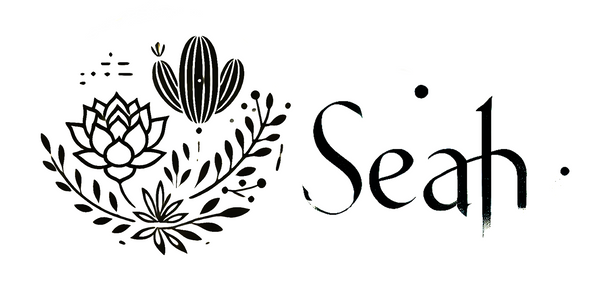Seah
Pachyphytum - Machucae /Baby finger
Pachyphytum - Machucae /Baby finger
In stock
Couldn't load pickup availability
Morphological Characteristics
Pachyphytum ‘Machucae’, commonly known as Baby Finger, is a succulent plant belonging to the Crassulaceae family. It is recognized for its plump, elongated leaves that resemble small fingers or jelly beans. The leaves are typically a pale blue-green color with a powdery, waxy coating known as farina, which helps reduce water loss and protects against intense sunlight. Under stress conditions like strong sunlight or cooler temperatures, the leaf tips may blush to a pink or reddish hue, adding to its ornamental appeal. The leaves are arranged in rosettes atop short stems, and during the blooming season, it produces small, bell-shaped flowers that are usually pink or red, emerging on slender stalks.
Growth Habits
Baby Finger is a slow-growing succulent that forms compact rosettes and can reach up to 15 cm (6 inches) in height. It tends to grow in clumps as the plant produces offsets, gradually spreading over time. In its natural habitat, which consists of rocky slopes in Mexico, it thrives in well-draining soils and semi-arid conditions. The plant is adapted to withstand periods of drought and is sensitive to overwatering.
Maintenance Points
• Lighting: Pachyphytum ‘Machucae’ prefers bright, indirect sunlight. It can tolerate some direct morning or late afternoon sun, which can enhance the coloration of the leaves. Insufficient light may cause the plant to become leggy and lose its vibrant color.
• Watering: As a drought-tolerant succulent, it requires minimal watering. Allow the soil to dry out completely between waterings. Overwatering can lead to root rot and fungal diseases. During winter, reduce watering frequency as the plant’s growth slows down.
• Soil: Use a well-draining succulent or cactus potting mix. Adding perlite or coarse sand can improve drainage. The soil should not retain excess moisture.
• Temperature: Ideal temperatures range between 15-25°C (59-77°F). The plant is not frost-tolerant and should be protected from temperatures below 5°C (41°F). In colder regions, it is best grown indoors or moved inside during the winter months.
• Fertilization: Feed sparingly during the growing season (spring and summer) with a diluted, balanced, water-soluble fertilizer once a month. Over-fertilization can harm the plant.
• Potting: Choose a pot with drainage holes to prevent water accumulation. Terracotta pots are ideal as they allow moisture to evaporate, reducing the risk of overwatering.
Reproduction Method
Pachyphytum ‘Machucae’ can be propagated through leaf cuttings, stem cuttings, and offsets.
1. Leaf Cuttings:
• Gently twist and remove a healthy leaf from the parent plant, ensuring that the entire leaf comes off without damage.
• Allow the leaf to callus over for a few days in a dry, shaded area.
• Place the callused end on top of well-draining soil without burying it.
• Mist the soil lightly until roots and a small rosette begin to develop, then water sparingly.
2. Stem Cuttings:
• Cut a healthy stem with a few leaves attached.
• Let the cutting dry for several days until the cut end forms a callus.
• Plant the callused end into well-draining soil.
• Water lightly after a few days and continue to care for it as a mature plant once roots establish.
3. Offsets:
• Remove the small rosettes (offsets) that form around the base of the parent plant.
• Allow them to dry and callus for a day or two.
• Plant the offsets in a suitable potting mix.
• Water sparingly until they are established.
Additional Tips
• Pest Control: Watch out for common pests like mealybugs and aphids. If detected, treat the plant with insecticidal soap or neem oil.
• Pruning: Remove any dead or shriveled leaves to maintain the plant’s appearance and prevent potential pest issues.
• Air Circulation: Ensure good air circulation around the plant to reduce the risk of fungal diseases, especially in humid environments.




